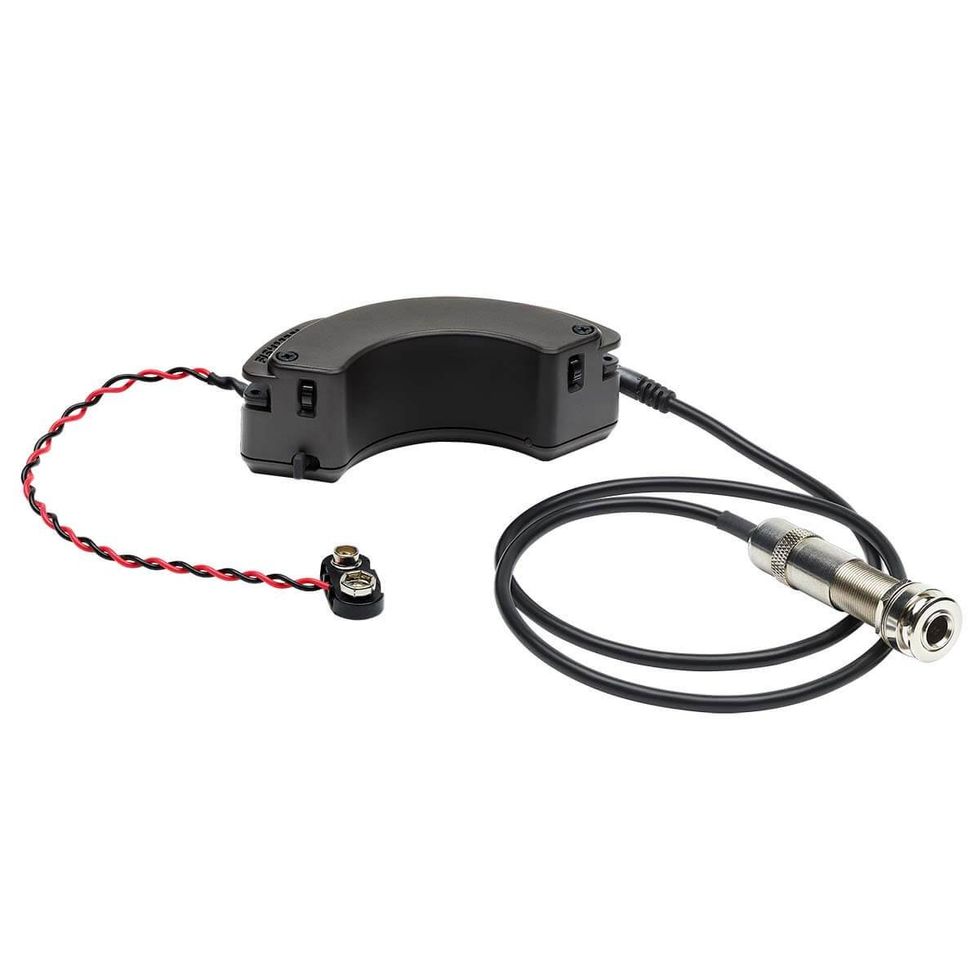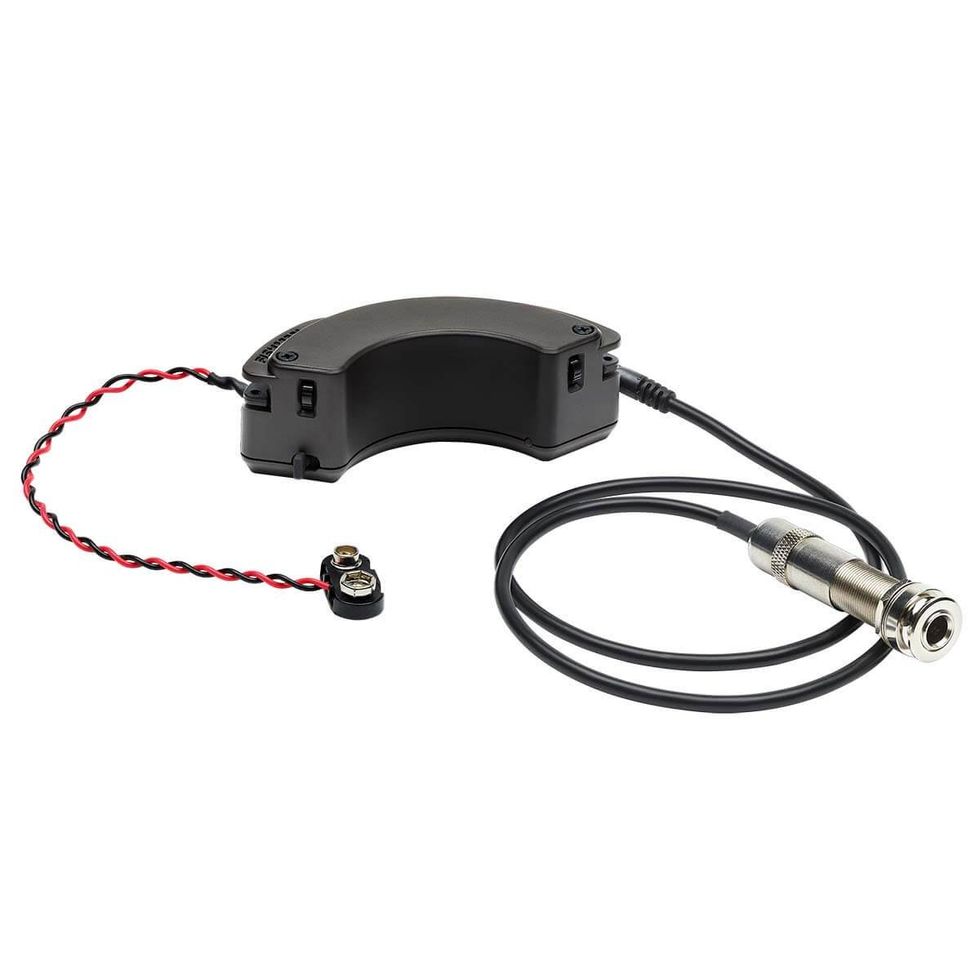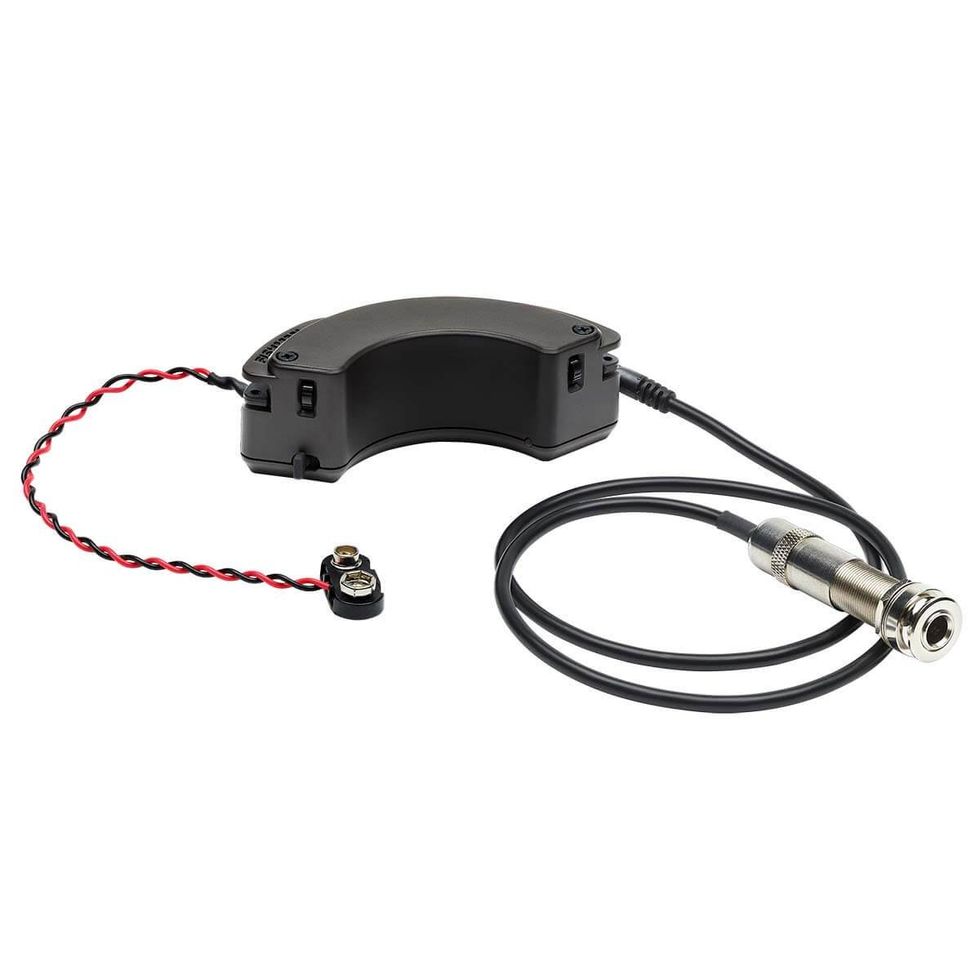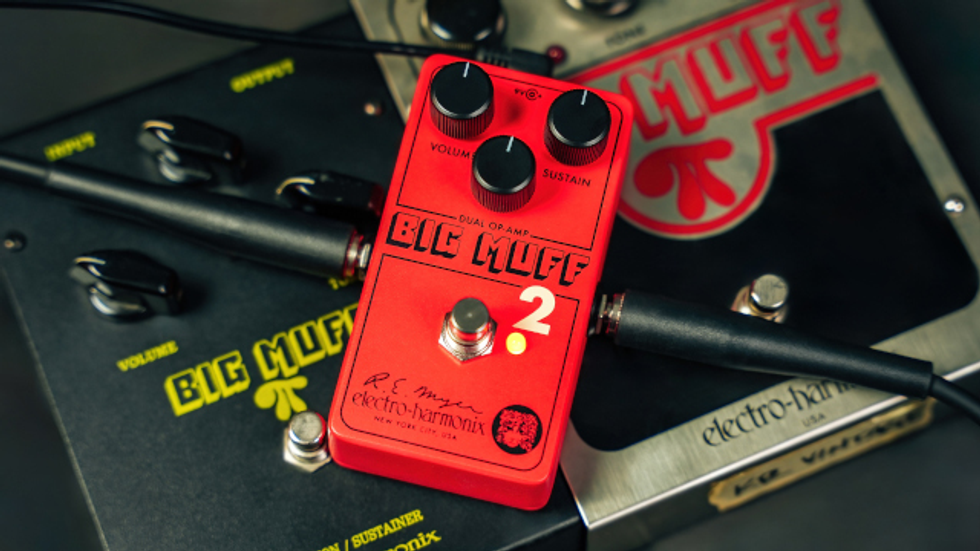A number of years ago, I reviewed Alfonso
Hermida’s Zendrive overdrive pedal, at
which time I called it: “Robben-in-a-box.”
Since then, multitudes seeking Robben
Ford’s creamy tone—and lacking the wherewithal
for a Dumble amplifier—have sought
out this amazing sounding pedal. Ford himself
has been spied playing through a standard
Fender Twin for a clean sound, while
using the Zendrive for his distorted tone.
Hermida recently released two new pedals:
the Nu-Valve overdrive, using rare miniature
tubes, and a super simple but amazing
sounding reverb called, uh, Reverb. He is a
full-time effects manufacturer, but for him it
is more than a job.
“This is a business for me because I have to make a living, but the way I look at it is I am trying to make a difference,” he says. “My approach has been to forget the bottom line and just design the stuff for the musician—even if it is at the expense making a dollar more here or there.”
I called Alfonso in his Florida shop to delve into the origins of a master effects builder.
What is your musical background?
I am a mostly self-taught guitarist. I have been playing since I was eight. I played in bands, but at one point I had to decide whether to stay in music or engineering. Guess which one won?
What is your engineering background?
I have two master’s degrees in mechanical engineering. After graduation I was teaching, then a few months later NASA in Maryland called me. I was an aerospace engineer there.
How did you get into designing pedals?
I read the Craig Anderton book, Projects for Guitarists, while I was still in high school. I studied the designs and built some of the things. I had a neighbor who was studying how to repair TVs. He helped me with the soldering and basic stuff. I couldn’t afford to buy good equipment, so I built it—mostly overdrives and boosters.
When did you decide to get into it commercially?
That’s what I wanted to do since I was a kid. My plan was to go to engineering school then get hired by Electro-Harmonix, but by the time I got into school [it was one of the times] they went out of business. I didn’t build anything for many years, but while working at NASA I discovered people on the internet who were designing and building pedals. That triggered my interest again. I began looking at every schematic I could get my hands on.
I was doing repairs for friends and local stores in 1998, when I heard a track that got me seriously working on pedals. I heard Robben Ford’s version of “Golden Slumbers” [on an instrumental anthology called Mike Manieri presents Come Together]. I thought the tone was amazing. At the time, I didn’t know who it was or what he was playing through—I just liked it. So I spent many years on getting a sound that was close to it. Eventually people told me about Robben and Dumble.
In 2003, I had my first pedal, the Mosferatu. I was able to get it into Robben’s hands, but it had too much gain for him. I based the Mosferatu on the track I had heard, which had more gain than he usually uses. Also, I responded to other people who wanted more sustain and more gain. Like Robben, I am the opposite: I want more dynamics, more tone. So I went back to a pedal I designed before the Mosferatu. I sent it to him and the rest is history—that became the Zendrive.
He put his stamp of approval on it?
We don’t have any endorsements. Musicians use whatever works for them. There were no strings. I was happy to send him one because it was inspired by his sound. Did you do any back and forth, with him saying, “Could you add a little this or that?” No. The first Zendrive had only three knobs [Volume, Gain, Tone] because I was in such a hurry to send it to him before he left for Japan. I later sent him a four-knob version, but he never said, “Change this or that.”
Was the fourth knob the Voice knob?
Yes. It adds or subtracts a little of the bottom end, and at the same time it affects the gain. It makes the knobs interactive—if you add more bottom, it will reduce the gain, but you can turn it back up again with the Gain knob. It is a way of tuning the pedal to your amplifier.
What was the next pedal?
A friend asked, “Why haven’t you done a tube version?” I am not a “me too” guy. I only do something if it is going to bring something different to the table. So I came up with my own approach, and that was the Zendrive 2 Tube Overdrive/Distortion.
Were you doing your speaker cabinets at the same time?
It was after I did most of the pedals. I was trained at NASA to make everything compact—weight is a very big issue. That’s why you don’t see a 4x12” in my house. I wanted a speaker cabinet similar to the one that Larry Carlton uses with his Dumble—the 1x12” ported, Thiele cabinet. I built some cabinets and took them to local stores. All of a sudden they were asking for a 2 x12” or a 2x10”, so I designed whole bunch.
You have a new tube pedal.
The Nu-Valve is an extension of the Zendrive 2, in a sense. Coming back to compact design, I looked for tubes that were very small that would do the job. I found the Nuvistor tubes. The problem is that they are single triode tubes, so if I want two triodes I have to use two tubes. Yes, they fit where the battery usually goes. The idea is to bring some tube response into play with the rest of the circuit. They don’t manufacture those tubes any more, so for many years I bought them and their sockets. I have plenty of them, for support and maintenance, but there will be a limited number of pedals.
Is the Nu-Valve’s British sound a function of those tubes?
People that listened to it said that in certain settings it sounded British, so that is where the idea came from. The Voice knob acts differently with the tubes. It is not as drastic a change as the Zendrive, but it can add a British voice into it.
What made you develop a reverb pedal after exclusively doing overdrives and distortions?
That came from an amp manufacturer friend of mine who needed a reverb for a big customer. I used a Belton reverb module. It’s a circuit encased in epoxy— they call it the “brick.” It has pins that connect to the rest of the circuitry. You have to design around it—the module only does reverb, you have to massage the signal going in and coming out, and blend it with the original sound.
I notice that the only parameter adjustment is mix. The decay and such are not adjustable.
It is all fixed already. It’s a different approach to what other people are doing. You can get the module in short, medium, and long decay. We used the medium. I wanted to make it as inexpensive as possible. The person I designed it for and the customer told me, “This sounds great. You need to put this in a pedal.” So I decided to do it.
Is it a digital circuit?
As the signal comes into the pedal, it branches out. One half will stay analog from beginning to end. The second half will go through the module and then will be blended with the original. With low settings on the mix you have an analog signal with some digital mixed in.
What’s next on the design table?
I have been discussing some big ideas. I usually take a long time to think about things. I design them in my head, and once they’re done there I make a prototype. I have always liked analog sound, but digital has a lot of potential for controlling things. Like I said, I am not a “me-too” guy. If I am going to do something new, it has to be something that makes a difference, both for the customer and for me—I need a challenge. What I’m working on right now is to try to improve the performance of digital equipment, so I can take advantage of what digital does best and what analog does best and blend them in good way.
“This is a business for me because I have to make a living, but the way I look at it is I am trying to make a difference,” he says. “My approach has been to forget the bottom line and just design the stuff for the musician—even if it is at the expense making a dollar more here or there.”
I called Alfonso in his Florida shop to delve into the origins of a master effects builder.
What is your musical background?
I am a mostly self-taught guitarist. I have been playing since I was eight. I played in bands, but at one point I had to decide whether to stay in music or engineering. Guess which one won?
What is your engineering background?
I have two master’s degrees in mechanical engineering. After graduation I was teaching, then a few months later NASA in Maryland called me. I was an aerospace engineer there.
How did you get into designing pedals?
I read the Craig Anderton book, Projects for Guitarists, while I was still in high school. I studied the designs and built some of the things. I had a neighbor who was studying how to repair TVs. He helped me with the soldering and basic stuff. I couldn’t afford to buy good equipment, so I built it—mostly overdrives and boosters.
When did you decide to get into it commercially?
That’s what I wanted to do since I was a kid. My plan was to go to engineering school then get hired by Electro-Harmonix, but by the time I got into school [it was one of the times] they went out of business. I didn’t build anything for many years, but while working at NASA I discovered people on the internet who were designing and building pedals. That triggered my interest again. I began looking at every schematic I could get my hands on.
I was doing repairs for friends and local stores in 1998, when I heard a track that got me seriously working on pedals. I heard Robben Ford’s version of “Golden Slumbers” [on an instrumental anthology called Mike Manieri presents Come Together]. I thought the tone was amazing. At the time, I didn’t know who it was or what he was playing through—I just liked it. So I spent many years on getting a sound that was close to it. Eventually people told me about Robben and Dumble.
In 2003, I had my first pedal, the Mosferatu. I was able to get it into Robben’s hands, but it had too much gain for him. I based the Mosferatu on the track I had heard, which had more gain than he usually uses. Also, I responded to other people who wanted more sustain and more gain. Like Robben, I am the opposite: I want more dynamics, more tone. So I went back to a pedal I designed before the Mosferatu. I sent it to him and the rest is history—that became the Zendrive.
He put his stamp of approval on it?
We don’t have any endorsements. Musicians use whatever works for them. There were no strings. I was happy to send him one because it was inspired by his sound. Did you do any back and forth, with him saying, “Could you add a little this or that?” No. The first Zendrive had only three knobs [Volume, Gain, Tone] because I was in such a hurry to send it to him before he left for Japan. I later sent him a four-knob version, but he never said, “Change this or that.”
Was the fourth knob the Voice knob?
Yes. It adds or subtracts a little of the bottom end, and at the same time it affects the gain. It makes the knobs interactive—if you add more bottom, it will reduce the gain, but you can turn it back up again with the Gain knob. It is a way of tuning the pedal to your amplifier.
What was the next pedal?
A friend asked, “Why haven’t you done a tube version?” I am not a “me too” guy. I only do something if it is going to bring something different to the table. So I came up with my own approach, and that was the Zendrive 2 Tube Overdrive/Distortion.
Were you doing your speaker cabinets at the same time?
It was after I did most of the pedals. I was trained at NASA to make everything compact—weight is a very big issue. That’s why you don’t see a 4x12” in my house. I wanted a speaker cabinet similar to the one that Larry Carlton uses with his Dumble—the 1x12” ported, Thiele cabinet. I built some cabinets and took them to local stores. All of a sudden they were asking for a 2 x12” or a 2x10”, so I designed whole bunch.
You have a new tube pedal.
The Nu-Valve is an extension of the Zendrive 2, in a sense. Coming back to compact design, I looked for tubes that were very small that would do the job. I found the Nuvistor tubes. The problem is that they are single triode tubes, so if I want two triodes I have to use two tubes. Yes, they fit where the battery usually goes. The idea is to bring some tube response into play with the rest of the circuit. They don’t manufacture those tubes any more, so for many years I bought them and their sockets. I have plenty of them, for support and maintenance, but there will be a limited number of pedals.
Is the Nu-Valve’s British sound a function of those tubes?
People that listened to it said that in certain settings it sounded British, so that is where the idea came from. The Voice knob acts differently with the tubes. It is not as drastic a change as the Zendrive, but it can add a British voice into it.
What made you develop a reverb pedal after exclusively doing overdrives and distortions?
That came from an amp manufacturer friend of mine who needed a reverb for a big customer. I used a Belton reverb module. It’s a circuit encased in epoxy— they call it the “brick.” It has pins that connect to the rest of the circuitry. You have to design around it—the module only does reverb, you have to massage the signal going in and coming out, and blend it with the original sound.
I notice that the only parameter adjustment is mix. The decay and such are not adjustable.
It is all fixed already. It’s a different approach to what other people are doing. You can get the module in short, medium, and long decay. We used the medium. I wanted to make it as inexpensive as possible. The person I designed it for and the customer told me, “This sounds great. You need to put this in a pedal.” So I decided to do it.
Is it a digital circuit?
As the signal comes into the pedal, it branches out. One half will stay analog from beginning to end. The second half will go through the module and then will be blended with the original. With low settings on the mix you have an analog signal with some digital mixed in.
What’s next on the design table?
I have been discussing some big ideas. I usually take a long time to think about things. I design them in my head, and once they’re done there I make a prototype. I have always liked analog sound, but digital has a lot of potential for controlling things. Like I said, I am not a “me-too” guy. If I am going to do something new, it has to be something that makes a difference, both for the customer and for me—I need a challenge. What I’m working on right now is to try to improve the performance of digital equipment, so I can take advantage of what digital does best and what analog does best and blend them in good way.









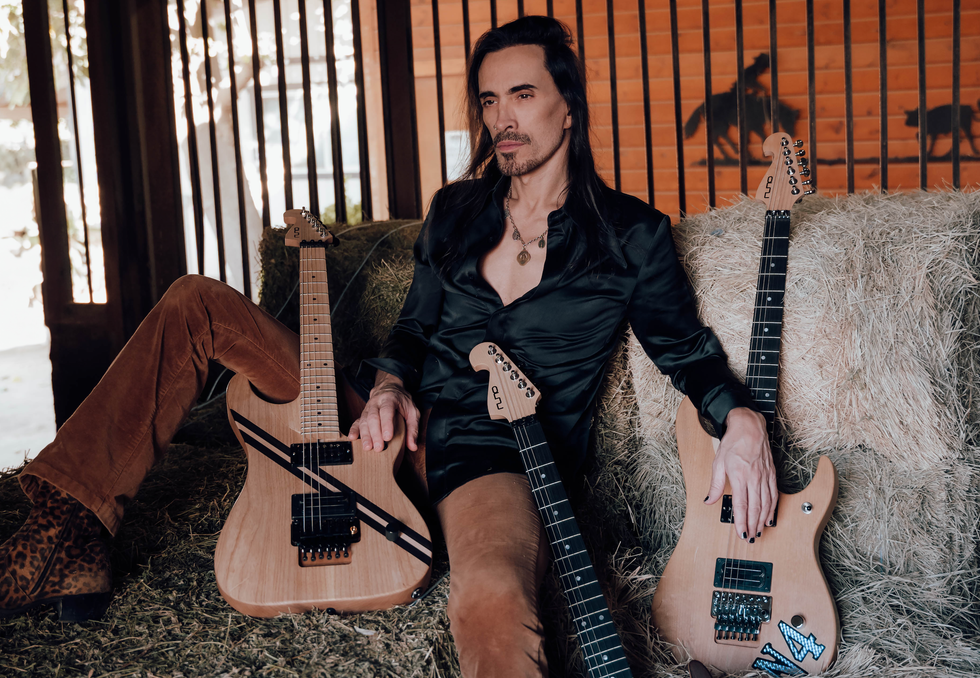

 Bettencourt onstage with the Dark Horse at the Motocultor Festival in Carhaix, France, on August 23, 2005 Sarah "Sartemys" Leclerc
Bettencourt onstage with the Dark Horse at the Motocultor Festival in Carhaix, France, on August 23, 2005 Sarah "Sartemys" Leclerc![Rig Rundown: Russian Circles’ Mike Sullivan [2025]](https://www.premierguitar.com/media-library/youtube.jpg?id=62303631&width=1245&height=700&quality=70&coordinates=0%2C0%2C0%2C0)






